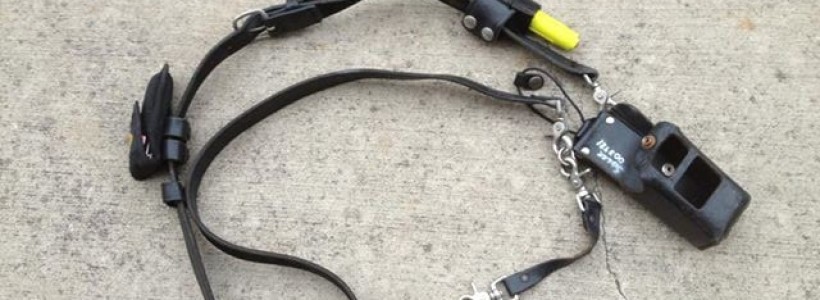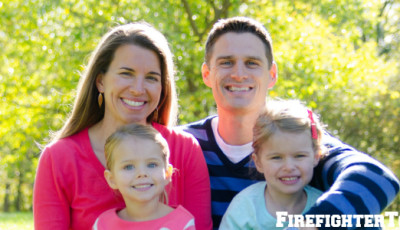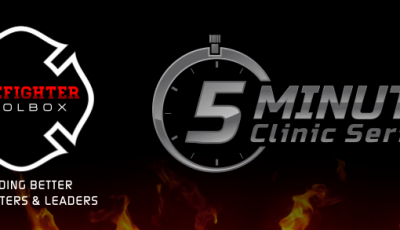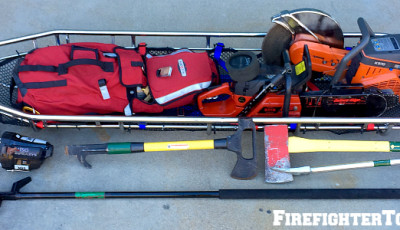Best Way to Wear Your Radio
On our Facebook page we started a good discussion on where you carry your portable radio.
The question was “where do you carry your portable radio”?
Do you carry it in the radio pocket or do you use a case and strap?
If you use a case and strap do you put it under your jacket or leave it on the outside?
We are following up on that discussion with a study conducted on this very topic by the Fairfax County Fire and Rescue Department. This is an eye-opening study so please take the time to read it and make your comments here. For those who carry the portable in their radio pocket or on the outside of their jacket with a case and strap we hope that after you read this you change you current practices.
Click here to read the study: 01-Portable-Radio-Placement-in-the-IDLH-Public-Release-FINAL(1)










I think I have the Radio Pocket pretty well covered.
1. I never knew why anyone thought that dangling mic cord was OK. I wrap it around the back of my neck to control it.
2. The cover on the radio pocket is useless, I tuck that down inside the pocket. I put the radio clip back and clip it to the pocket, and now the top of the radio faces me and I can read it if conditions allow. The clip dose work to some extent, we could put something on the front of the radio pocket to make that better, right now the velcrow for the cover is working well enough.
3. The clip holding my flash light has a wire tie I clip the mic to, it has worked, but I’m sure that could be made better too. I think being low/crawing, and the mic being over it has protected it from heat.
The only real problem I’ve scene, is in a flashover, the mic cord started to burn through exposing the red and white wire underneith, the radio still worked.
I took a quick picture, I hope the link works.
https://home.ptd.net/~baad/DevenRadioPocket.jpg
Lt Deven Knoll
Lt.Knoll
Very nice article, I agree with your assessment. The “harness” is also VERY useful as a place to wear a radiological dose monitor or PRD. It maintains the PRD in an optimum position at the center of body mass. Unfortunately most keep theirs on their belt which helps to protect the family jewels but does less to protect vital organs against radiological threats.
All,
Thanks for the comments. Let me address Deven first. One of the issues behind placing the radio and cord and RSM under the turnout coat is to protect the RSM and cord from high temps. Leaving it exposed opens it up to potential failures from rapid heat changes. I use it this way and I also have a greater control over the reach of my channel knob and a better control of it swaying and moving all over. There is no sway bar attachment on my coat. Give it a try under the coat a few times and let me know what you think. There is an NFPA committee working now to review the issues behind the RSM and cord and a way to reduce any issues. The concerns over radio interference is legitimate and must be taken into consideration as well.
Jay yes I also carry the PRD on my radio strap on EMS calls but when I go on any incident where I have to gear up I take it off and clip it to my turnout jacket and wear the strap and holster on the inside. Heck I sometimes use that empty radio pocket as a mechanism for it to clip on. It has all taken a good amount of getting used to over the past year or so for me. I was always an outside the jacket guy in a strap and holster. Now I can see and feel the benefits of under the jacket use.
I work in New Haven, CT. We use a case and strap and wear it under our coats and have a lapel mic with just a ptt button, no channel dial or emergency button on lapel mic. I would like to have an emergency button on mic because finding under coat is impossible. One thing we do have, since we have a 10 channel dial our radios are configured so dial it all the way clockwise or counter clockwise you are on dispatch channel and one turn from either side brings you to fire ground channel which is great because you can find each channel blindly.
Our radios are equipped with a strap and case. The speaker mike has a channel knob, volume buttons, and the orange emergency button. I require my members to wear the radio under their coat to protect the radio and cord. We reverse the anti sway strap to keep the radio from sliding around under the scba. It keeps it fairly centered over your thigh but under the coat. The only part exposed is the speaker mike itself as it is clipped to the loop on the coat. I cant stand to see the cord around the neck as this is the one part of your torso that is taking a beating from the heat…..ijs
Lt. Cole I happy to see other departments doing this. The additional features on your RSM are very important and I support that configuration 100%. It meant so much to me that a few years back I went out and purchased my own RSM with the EA button, ear piece slot, volume control and channel selector.
I figured $150 was worth it. With this mic I have everything at hands reach. I used to take the RSM back and forth to work as well and use it on my work portable too until we changed radios. I still use it on my home portable and apparatus portable.
The main radio channel is also something we use in my area. Many are moving this direction if not already. If things get hairy and the channels changed somehow I know I can always go home if I find home by just turning that knob until it stops.
Be safe!!
Joe does your department purchase the strap and case for each member or each riding position? Either way if your equipping you radio with this that is great!
I agree on the cord around the neck. That to me is asking for trouble. If others would equate the radio and its accessories as important as other tools on the fireground the usage and attitude toward the radio may change. I think it is generally assumed the radio will work when its turned on and will be there when needed. It needs to be seen and treated like any other tool and safety measures taken to ensure it stays in perfect operating condition. RG
Rich,
Yes our department supplies the radio strap and case. It is assigned to the radio and stamped with the radio’s identifier that shows up on the other radios screen and dispatch consoles. I forgot to mention also that the radio has the channel annoucement feature that announces the channel name as your scroll through. This is heard clearly from the RSM so there is no need to look at the screen or count channels, etc.
And there is a radio assigned to each riding position. We are an 800 mhz P25 system with a main dispatch talkgroup and 8 fireground talkgroups,4 of which are monitored by the fire center. They assign one these channels upon disoatch of a box alarm or multi company response.
Hey Rich,
Thanks for the great resource in your podcast and website.
I’m a POC FF and a p/t paramedic on Vancouver Island in BC. I started wearing my radio exactly as described in Denver article about six months ago after doing some research on the subject. As a rule I wear it under my coat low enough that the antenna and the controls are accessible, unless I’m the IC and arriving in the buggy. In that case I might wear it over my coat depending on the incident.
For now I’m the only one wearing a radio this way in the district. The guys like to call it my man-purse but already there are a few people asking where to buy one.
Cheers, Greg
I should say that It’s not exactly as described in the article in that we use Morning Pride gear with clasps and snaps, so I just pull my mike through below the top snap basically inline with the radio strap and clip it on my coat rather than up the neck and then down to the coat strap.
Always use the “blownut strap”, as the oldtimers called it but location depends on the job…Non fire: undercoat with lapel mic clipped to my collar. Fire: Over my coat but held in place by the scottpack. Impossible to reach the knobs for me if it was under the coat and pack is strapped tight. See your point though about the heat issue.
I’m a volunteer and would like to use a radio strap. It appears difficult for the following reason. Feedback, please!
Except for our officers who have dedicated radios, our crew radios are mounted in the trucks. I would like to use a radio strap under my coat, but that means putting the strap on before the coat and leaving it open. Upon getting on the truck, placing the radio in the holster, routing the mic cord and closing my coat. Those extra steps could be at the point when the truck is pulling out and I’d have to be standing (I don’t think it would be possible in a sitting position).
I guess the other option is to become an officer and get a dedicated radio. :)
Thoughts/Experiences?
I’m trying to visualize what is being said, I’m a volunteer at my department right now. And this would be a helpful discussion i believe for my class. Thank you